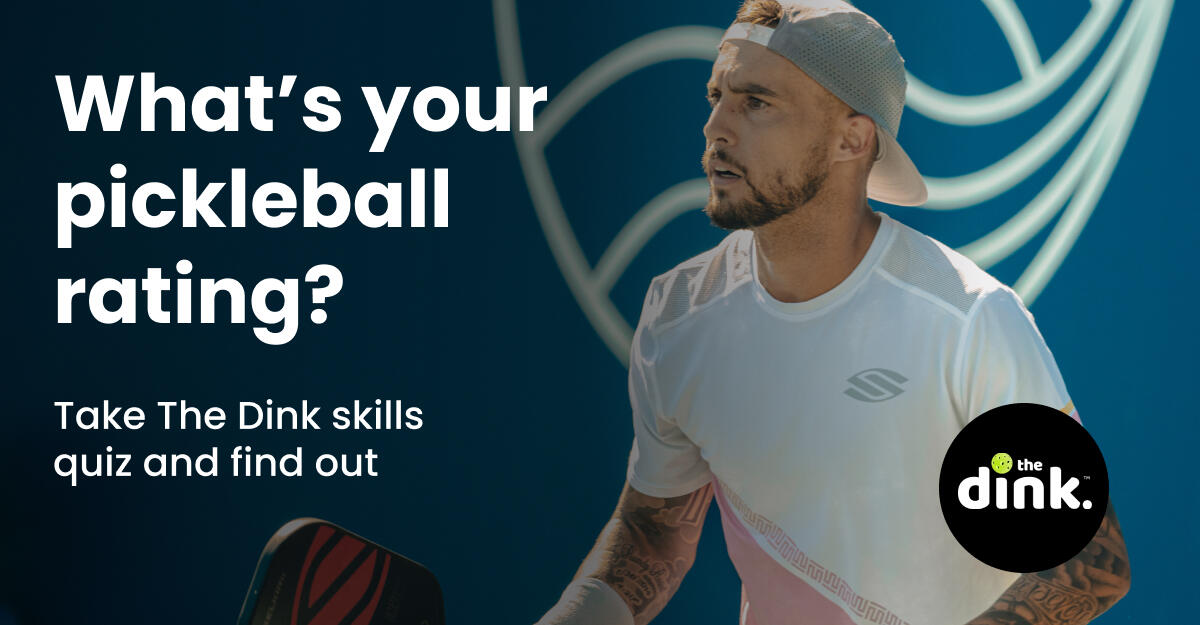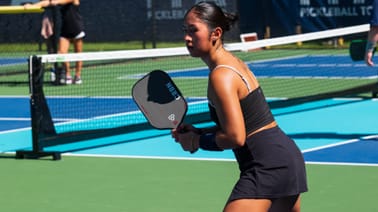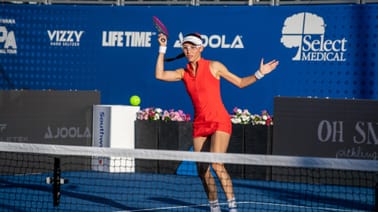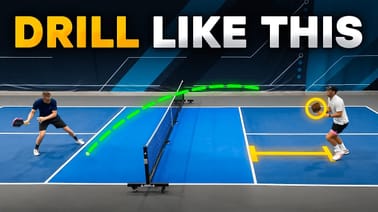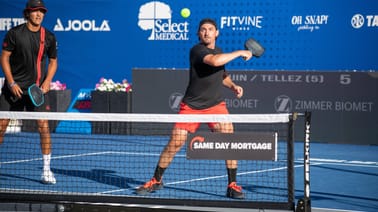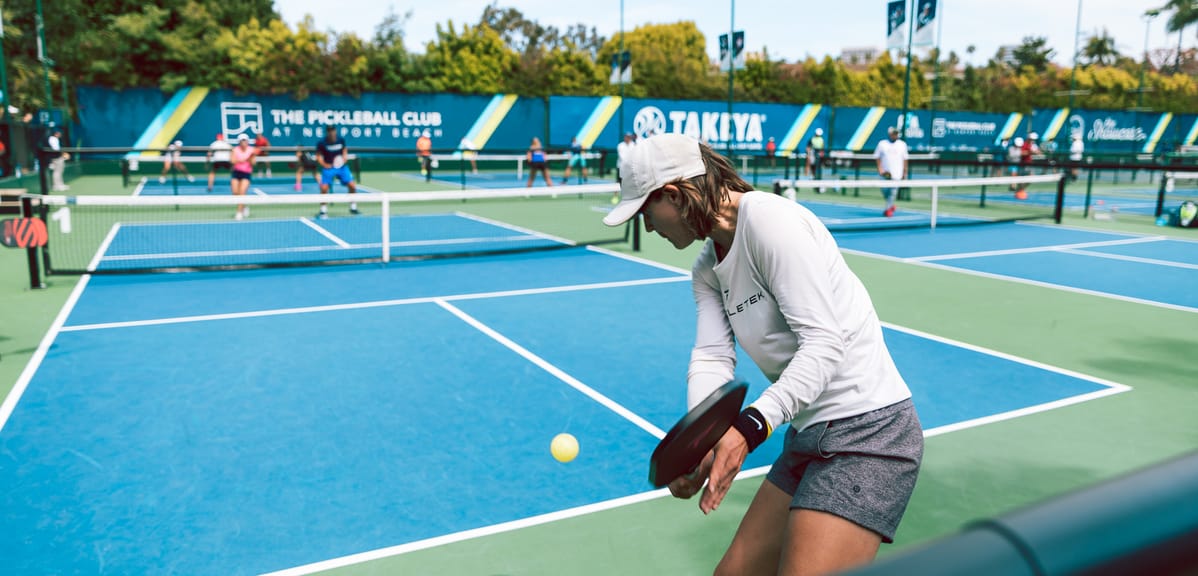
For most players, their worst shot is their backhand.
To take that a step further, their backhand "third" (from the baseline) is even worse.
This is because players are trying to do too much with it. This causes them to swing too hard and be late on their swing. If you're curious how to improve your backhand third shot (like my opponent the other day in rec), this article is for you.
Why Backhand Thirds Are Such a Challenge
One of the trickiest shots to master in pickleball is the third, especially on the backhand side. It requires a balance of precision and control to set up your next play without giving your opponent an advantage.
Recently, after a match, I received a great question from an opponent who wanted to improve their backhand third shot. Here’s the conversation and some key tips I gave him that can also help you improve your game.
Text from My Opponent: Good playing today - you were a problem (in a good way).
"I’m all ears if you have any advice on making my third shots more effective, particularly my backhand third. Feel like I’m producing a lot of dead dinks (I think that’s what they’re called) where anyone good just lets it bounce, steps back, and has time to hit a groundstroke from the kitchen. Or, I’m hitting them too long which results in anyone good hitting an offensive volley."
My Response: Thanks, those were fun games. Lots I could say about this, but to keep it simple…
- Eliminate slice on the backhand thirds - work on rolling it. Topspin will help.
- Even if you can’t roll the backhand, just flatten out the ball and use less arc. Hit more of a line drive.
- Introduce a hybrid third - 75% pace, line drive, and try to make it dip over the net. Even without a lot of pace, the best they can do is block it.
Let's explore each in a bit more detail.
#1 - Ditch the Slice, Add the Topspin
- Why Topspin Works: When you use topspin on your backhand third shot, the ball will dip down faster after crossing the net, making it difficult for your opponent to time their return. It also helps keep the ball low, preventing your opponents fromwhich attacking it.
- How to Practice: Focus on rolling your wrist over the ball and making contact slightly in front of your body. Start slow, and get a feel for the ball spinning off your paddle. The key is to minimize slicing, which can lead to "dead" dinks that just sit up, making it easy for your opponent to attack.
That said, backhand rolls are difficult. Not everyone has the swing mechanics to execute them or the time to learn.
In that case, two things: A) Run around your forehand as much as possible and avoid backhand thirds B) Tips 2 and 3 below will help
#2 - Flatten Out the Shot and Use Less Arc
- Aim for Line Drives: If topspin isn’t your strength yet, try flattening out your backhand third. Instead of going for a slow, loopy arc, think about hitting a more direct shot. The goal here is to limit the reaction time your opponent has to counter.
- Focus on Contact Point: Make sure you’re striking the ball cleanly and at the right point. This will allow you to hit a flatter, quicker ball that still lands softly.
#3 - Master the Hybrid Third Shot
- 75% Pace and Dipping Line Drives: This shot is all about blending pace with precision. You don’t need to hit it hard, but you want it to move through the air with a bit of zip and then dip quickly over the net. Even if you’re not hitting a perfect topspin shot, the slight downward trajectory can limit your opponent’s options, often forcing them to play a defensive block.
- How to Execute: Focus on hitting the ball at about 75% of your maximum power. This gives you enough speed to challenge your opponent but allows you to keep control and add a bit of dip. Use a shorter backswing and follow through to keep the shot low and accurate.
By adjusting your approach to the backhand third shot with these strategies, you can start dictating play and put your opponents on the defensive. Practice these tips during your next few sessions, and you'll see a noticeable improvement in how effective your third shots become.
